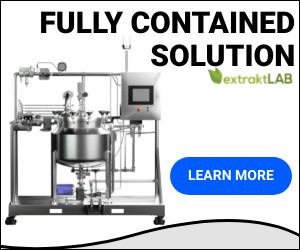As a buyer, you will be encouraged by the various purveyors to elevate their “differentiated” feature over competitor features to try to induce you to go with them. Emphasis on flow rate or emphasis on pressure or service are the typical one-off sales gimmicks designed to get you to sign.
The more sales guys you talk to, the more confusing the picture will seem. Arranging the specifications in a table may help. We have found however, that if you become fixated on a particular feature related to one piece of equipment, you may be in the weeds when you need to be looking at the forest.
We have found that once the quality of the machine and oil is satisfactory, most of our customers care about three main factors: speed, power, and footprint, so that their operation is scalable to larger volumes when they expand.
Infrastructure Requirements
Besides equipment specifications, some seemingly low-cost and simple extractors carry with them complex and very expensive infrastructure requirements. For example, any infrastructure that must be compliant with cGAMP, cGMP, or cGMP+C1D1 special-use facilities carries with it an increasingly high level of infrastructure requirements and costs.
C1D1 space typically can be built for 350-500 USD/square ft and also has stringent OSHA, state fire codes, and solvent storage requirements for flammable liquids and vapors.
GMP facilities requirements are based on designated and well-defined levels of control for each manufacturing and adjacent area. Controlled GMP compliant spaces can be built for 1000-2000 USD/square ft.
With these kind of infrastructure costs, you may find yourself with low prices on equipment but left holding the bag on costly infrastructure.
More Equipment Means Greater Complexity
As the number of pieces of equipment in your facility increases, the decision-making process gets more complicated. You will need to have knowledge of other upstream and downstream equipment.
For example, for a simple manufacturing facility, you will be purchasing at least 10 different pieces of major equipment and will need to consider many hundreds additional features per piece of equipment. In addition, each piece of equipment will also have their unique infrastructure requirements.
The reality is that as you layer on equipment, processes, facilities, and compliance concerns, you are quickly looking at optimizing well over 1000 parameters with maybe 20-30 key parameters that matter to your organization.
Systems Complexity
Each individual piece of equipment will affect the performance of every other piece of equipment in the value stream. When equipment is commissioned into a manufacturing system, there are additional parameters that become important. For example:
- Is my equipment balanced from a maintenance perspective?
- Does the throughput of equipment A match the throughput of equipment B.
- What is the workflow?
- How many units per unit time will I expect to produce?
- What is the value add labor vs machine time?
And the list goes on and on. In operation, you will have 1 or 2 key process indicators for these parameters. These can include throughput, power usage, labor content, WIP and cycle time.
So there is the complexity of the equipment, the complexity of the methods deployed, the complexity of the infrastructure, and the complexity of the system as a whole. All these areas need equal attention in order to make the proper purchase decision.
Theory Guides, Experiment Decides What to Buy
The best way to get through all of these decisions is to purchase tried-and-true complete manufacturing systems and not individual pieces of equipment. Then, go see the system in action.
Note the throughput. Calculate the power. See the infrastructure. Look at the kind of labor you will need. Count the employees. Look at the products. And then hire the people who will put it all together for you, train your employees, set you up with work instructions, help with equipment design, layout, and workflow and set you up with analytics.
We would be happy to help you through your purchasing decisions. Call 651-600-0036 or complete the form below to contact our knowledgeable staff of extraction experts!


